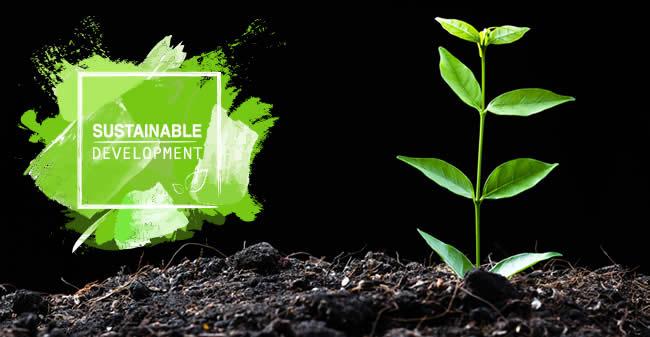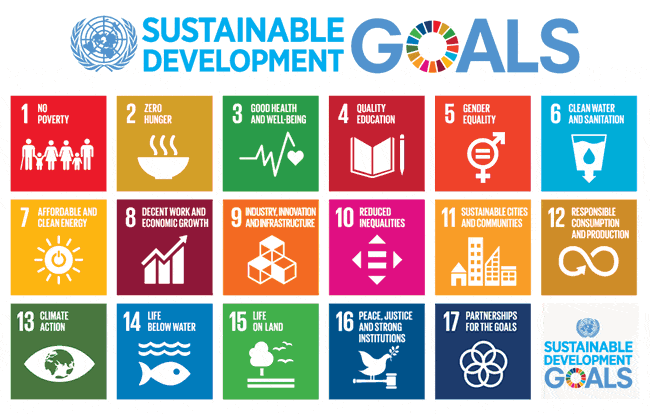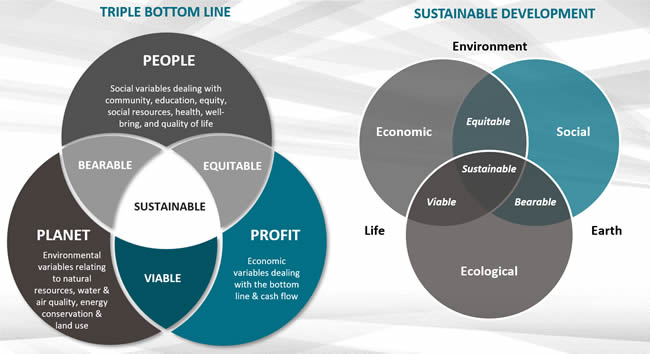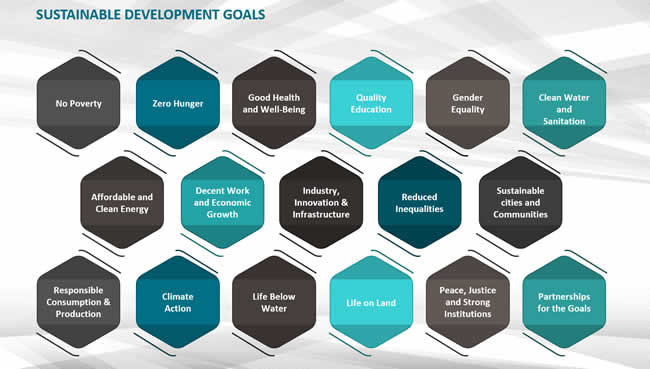For several years now, corporate, societal, and political attention to sustainability and sustainable development has increased.
It’s not the first time: before the impact of the ‘Great Recession’ was felt, for instance, the attention for environmental issues was also on the rise. Public awareness of ecological and other significant problems that need to be tackled and resort under the modern view on sustainability often tends to go up and down.

The “issue-attention cycle” that Anthony Downs described in his 1972 seminal paper “Up and Down with Ecology: The ‘Issue-Attention’ Cycle” is still regularly mentioned in this regard. Attention for all sustainability-related and other major – global – issues usually fades when crises hit.
Sustainability and sustainable development – a broadening field
However, the attention for sustainability didn’t diminish with the outbreak of the corona crisis. On the contrary, the focus on – and investments regarding – sustainability issues in the broad sense increased in various areas (and decreased in others).
While the concept of sustainability isn’t new, it’s clear that something has changed since it first became a policy concept. In previous articles, many dating from before the pandemic, we touched upon several of these changes. The pandemic brought some to the forefront and accelerated initiatives in multiple domains.
Sustainability and sustainable development are present in every domain imaginable: politics and regulation, social debates, business, marketing, the evolving attitudes of the consumer, and academia. The two major dimensions are sustainability science and governance, divided into different subfields.
Sustainability and younger generations
Sustainability is more than ever on the mind of the younger generations that just entered or are about to enter the workplace.
As Geert Aelbrecht, Chief People Resources Officer at construction industry firm BESIX recently said in an interview, salary and career opportunities remain essential for these younger generations. But the weight of purpose, sustainability, and related topics such as diversity and inclusion has increased significantly. He’s not the only one saying so, of course. We see it pretty much everywhere, as research has been showing for years now.
For example, when Hilton announced its ‘Travel With Purpose‘ ESG program and goals in 2018, the hotel chain surveyed 72,000 guests (Travel with Purpose is Hilton’s Environmental, Social, and Governance or ESG strategy to drive responsible travel and tourism globally). According to the survey, one-third of respondents actively researched information on a hotel company’s environmental and social efforts.
Today, we see this in virtually all sectors; ask HR teams and managers recruiting younger workers like Geert Aelbrecht. Candidates want to know what you’re doing in terms of sustainability and so forth. Back in 2018, the Hilton survey found the same well-documented effect among younger generations: social, environmental, and ethical considerations turned out to be central to Hilton guests’ buying preferences, especially among those younger than 25 years old.
So, sustainability has permeated numerous sectors and, of course, specialties with a growing body of literature, scientific research, practical applications, cultural changes, innovations, and evolving views – with younger generations, in particular, being more conscious and demanding about it as we’ll see further.
Take building management, for example, where sustainability, energy savings, green buildings and more, have been driving the evolution of the building management system (market) for years. According to expert Martin Feder, the main factors putting the BMS in the center are, among others, the importance of energy, green buildings, and environmental regulations.
And this is just one domain that requires quite some expertise. Sustainable buildings, sustainable production in a sustainable industry, sustainable consumption, sustainable travel, sustainable cities and communities, sustainable education, the list of – interconnected – domains is endless.
The evolutions in sustainability priorities and impact of the corona crisis
The focus in all these sustainability branches and subfields has shifted over the past years and decades.
Accelerated by various impacts of the corona crisis on wellbeing (health, mental wellbeing, social aspects, work), the attention for people-centricity has grown on top of and in relation with the environment. Related themes that were gaining importance before the pandemic (think diversity and inclusion or the future of work, for example) came to the fore even faster as a result. Other factors, including the mentioned generational ones, also contributed to this.
Until recently, the planet was a large world in which human activities and their effects were neatly compartmentalized within nations, within sectors (energy, agriculture, trade), and within broad areas of concern (environment, economics, social). These compartments have begun to dissolve. This applies in particular to the various global ‘crises’ that have seized public concern (Report of the World Commission on Environment and Development: Our Common Future, 1987)
Another dimension that gets highlighted more is everything related to the built environment, where we look more beyond environmental sustainability, and wellbeing is central too. Resilience – in the most diverse domains – is also omnipresent.
And, of course, technologies cannot be left out either. Digital transformation and Industry 4.0 are viewed both from their impact on the environment, people, and society and from the perspective of the underlying technologies’ opportunities for more sustainable production and living. Check the concept of Industry 5.0 in that regard where automation, digitization, and industrial transformation are seen more in a context of people, society, and stakeholder value.
The pandemic plays a role in this technology context as well. In an article on digital transformation in the ‘new normal’ (whatever that may turn out to be in practice), author Nicolas Windpassinger states that COVID-19 has been a massive accelerator of digital, reinforced by, among others, the core needs of resiliency and sustainability.
We also have to add business to this non-exhaustive list. Sustainability has become big business and, partly due to government initiatives, an area in which organizations will have to be active to remain competitive or even stay in business within ecosystems and supply chains. As Schneider Electric’s Virginie Milhaud reminds, governments push their sustainability agendas even more than they already were before the pandemic. For companies like Schneider Electric, that means business since realizing sustainability goals is already at the core of what they enable their customers to do.
Despite the multitude of themes and issues that resort under sustainability and the many subfields of sustainable development, the general principles and underlying thoughts remain more or less the same as in the early days. The fiercest debates revolve around whether sustainability is possible with the current economic paradigms and how we consume.

The bigger picture of sustainability and sustainable development
It is important not to lose sight of the bigger picture amid this ever-expanding field and challenge of sustainability and sustainable development.
Ultimately, everything is connected somehow, and a holistic view is as important as a solid knowledge of important specialties in a sustainability context.
The modern meaning of sustainability goes back to questions regarding the capacity to sustain human activities and progress/maintenance regarding wellbeing in correlation with the natural environment and natural resources. Furthermore, these same resources are essential for the biosphere, the totality of all ecosystems, including all life on earth, on top of ‘human activities.’
These human activities are diverse, but in sustainability, they are usually seen within this vision to ensure welfare in the general sense. However, it is clear that several questions arise here because there is no universal vision of all aspects of human welfare.
Sustainability also has, by definition, a future dimension. In other words, it is not only about the welfare of current generations but also about future generations.
Here, among others, the importance of natural resources and the pursuit of biodiversity and a (better) quality of life for all fit.
All in all, it’s an anthropocentric issue that generates debate as such. Moreover, in recent years sustainability has often been approached from the perspective of dominant economic models in which technology is also often considered in the scope of “green growth.” Here, too, there is a great deal of discussion with alternative models that proponents believe are better, including the circular economy that separates the ability to achieve economic growth from the consumption of natural resources.
Last but not least, there’s been quite some rethinking on what “needs” humans really have and how these can be met more equally across the globe. Models which are too strongly oriented towards consumerism, (economic) needs, and even a view of humankind in which the model of the homo oeconomicus does not seem to be far away are coming under increasing pressure.

Regardless of the views and questions regarding these needs, sustainable development is seen as a way or organizing principle to realize them.
Sustainability, the system thinking view: sustainable development goals
Sustainable development is still often defined as a development approach that aims to provide for the needs of current generations without jeopardizing the ability of future generations to meet their own needs, as in the so-called Brundtland Report (Report of the World Commission on Environment and Development: Our Common Future, 1987) of the UN in 1987.
As Tom Kuhlman and John Farrington wrote in 2010, the “document was concerned with the tension between the aspirations of mankind towards a better life on the one hand and the limitations imposed by nature on the other hand. In the course of time, the concept has been re-interpreted as encompassing three dimensions, namely social, economic and environmental”.
So, while the dimension of present and future human needs, connected with greater wellbeing and the limits of our resources, is still present, the focus has shifted even more to a systems view of all these goals.
This evolution, which began in the 1990s, led to the widely recognized seventeen sustainable development goals (SDGs) defined at the 2005 World Summit on Social Development.
All these sustainable development goals are interrelated, and tackling/studying them requires an interdisciplinary approach. At the same time, they are assigned to three dimensions related to the “triple bottom line” (TBL or 3BL) framework with its social, environmental, and financial component, also known as the 3Ps (People, Planet, Profit).
The seventeen sustainable development goals are, at the same time, more or less the significant challenges facing humanity that are closely intertwined. Climate, environment, and community are part of that whole.
The needs have become goals, the well-known SDGs or sustainable development goals, yet the discussions on how to realize them are far from over.

Top illustration: purchased under license Shutterstock

